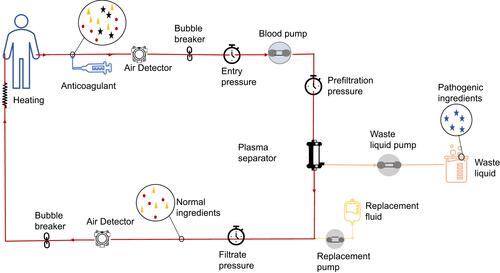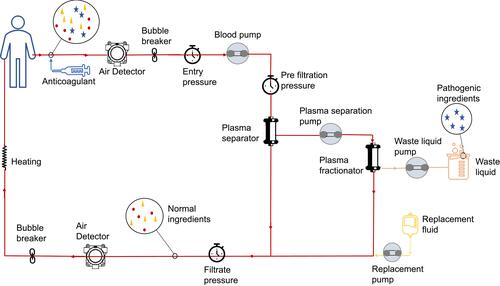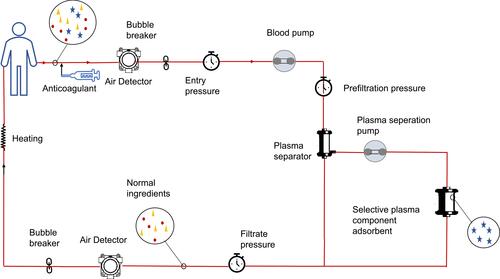Figures & data
Table 1 The Different Ways of Therapeutic Plasma Exchange
Figure 1 The principle of plasma exchange (PE). The blood is separated from the body, processed and then passed through a single plasma separator. The filtered blood components are returned to the body together with the replacement fluid.

Figure 2 The principle of double filtration plasmapheresis (DFPP). The blood passed through the plasma separator and then passed through the plasma fractionator, and the filtered components were also returned to the human body after being combined with the replacement solution.

Figure 3 The principle of plasma adsorption (PA). Blood that has gone through a plasma separator is washed out of the blood with selective adsorbents and returned directly to the body.

Table 2 Indications for TPE in Patients with Cancer
Table 3 Report on TPE for Cisplatin Overdose
Table 4 Severity of Adverse Events
